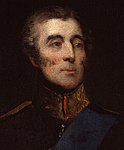| |||||||||||||||||||||||||||||||||||||||||
All 658 seats in the House of Commons 330 seats needed for a majority | |||||||||||||||||||||||||||||||||||||||||
|---|---|---|---|---|---|---|---|---|---|---|---|---|---|---|---|---|---|---|---|---|---|---|---|---|---|---|---|---|---|---|---|---|---|---|---|---|---|---|---|---|---|
| |||||||||||||||||||||||||||||||||||||||||
 Colours denote the winning party. Strength of colour indicates number of candidates returned. | |||||||||||||||||||||||||||||||||||||||||
 Composition of the House of Commons after the election | |||||||||||||||||||||||||||||||||||||||||
| |||||||||||||||||||||||||||||||||||||||||
The 1832 United Kingdom general election was the first United Kingdom general election held in the Reformed House of Commons following the Reform Act, which introduced significant changes to the electoral system.
Earl Grey, Prime Minister since November 1830, led the first predominantly Whig administration since 1806–07, supported by Radicals and allied politicians, though no formal Liberal Party existed yet. Viscount Althorp led the House of Commons and served as Chancellor of the Exchequer. The Tories, led by the Duke of Wellington and Sir Robert Peel, had not fully adopted the Conservative label. In Ireland, Daniel O'Connell's Irish Repeal Association campaigned for the repeal of the Act of Union, presenting independent candidates.
The election took place from December 1832 to January 1833, with polling staggered across constituencies. The Whigs won an overall majority of 224 seats, 67%, the Tories 27%, and the Repeal Association 6%. The Whigs won 67% of the vote, the Tories 29%, and the Repeal Association 4%. The results varied by region, with the Whigs dominant in Great Britain, but facing stronger Tory opposition in Wales and Ireland.
This was the last election before the Tories formally reconstituted themselves into the Conservatives, and the last time until 1906 that they won fewer than 200 seats.


